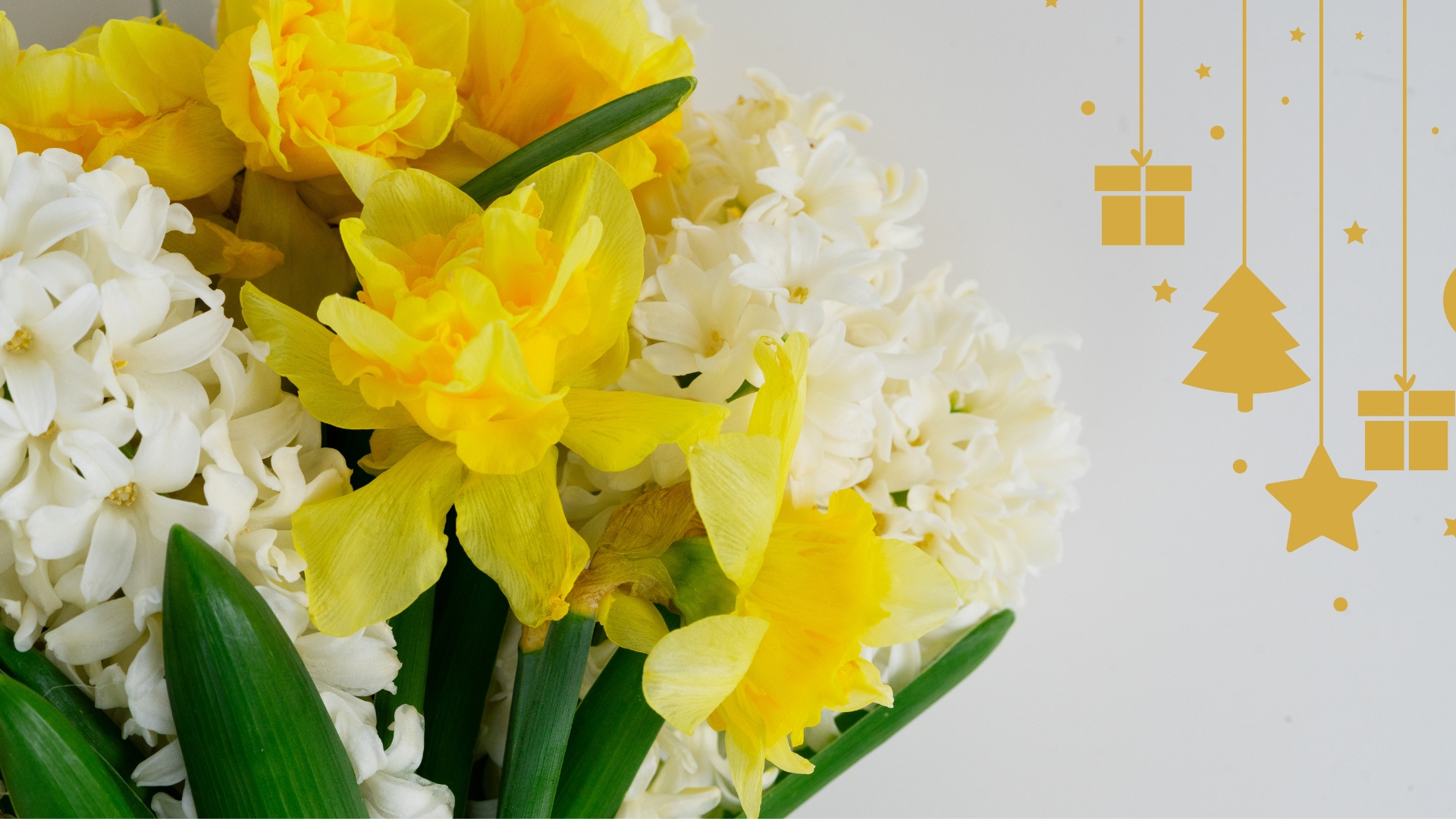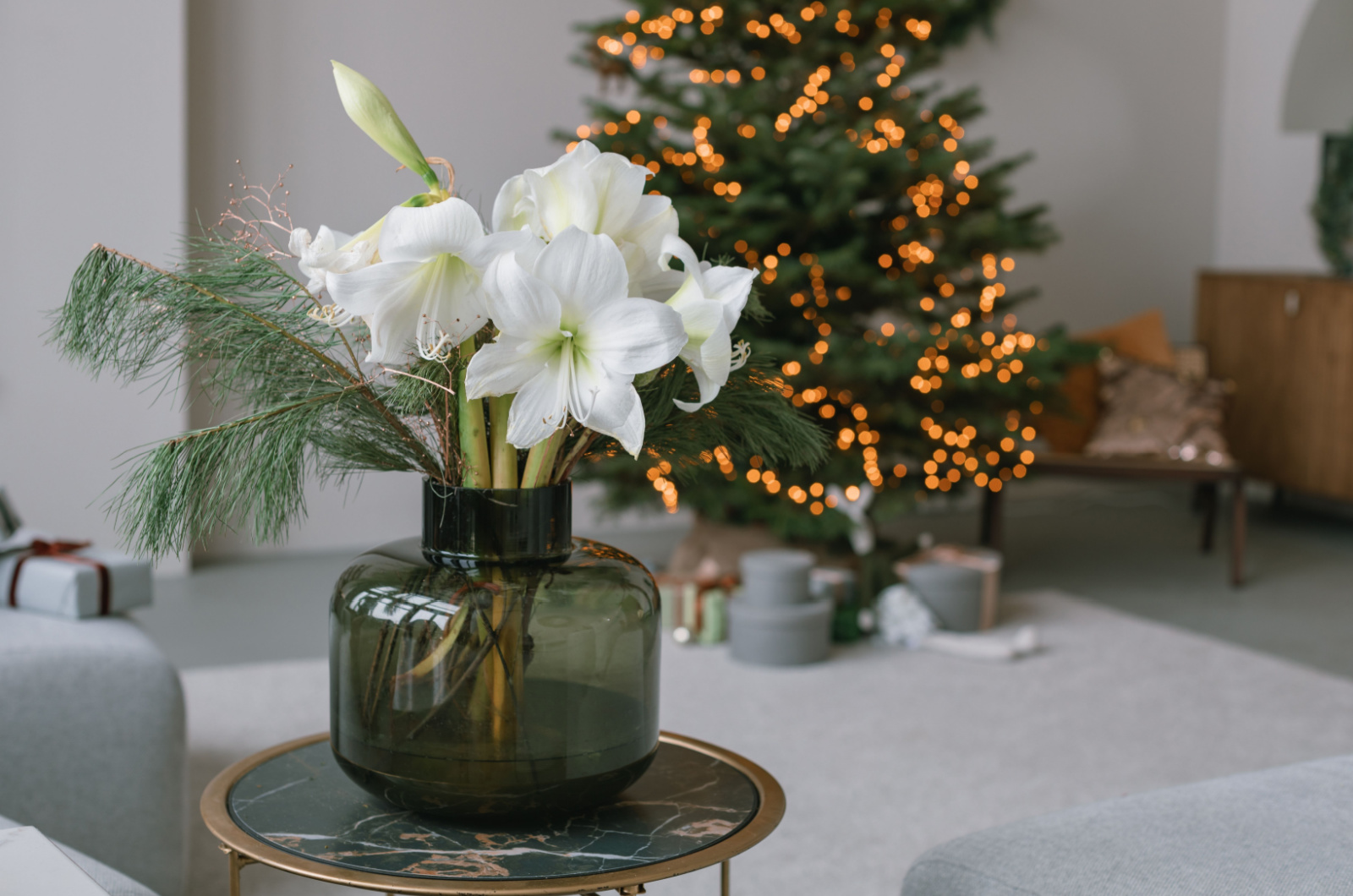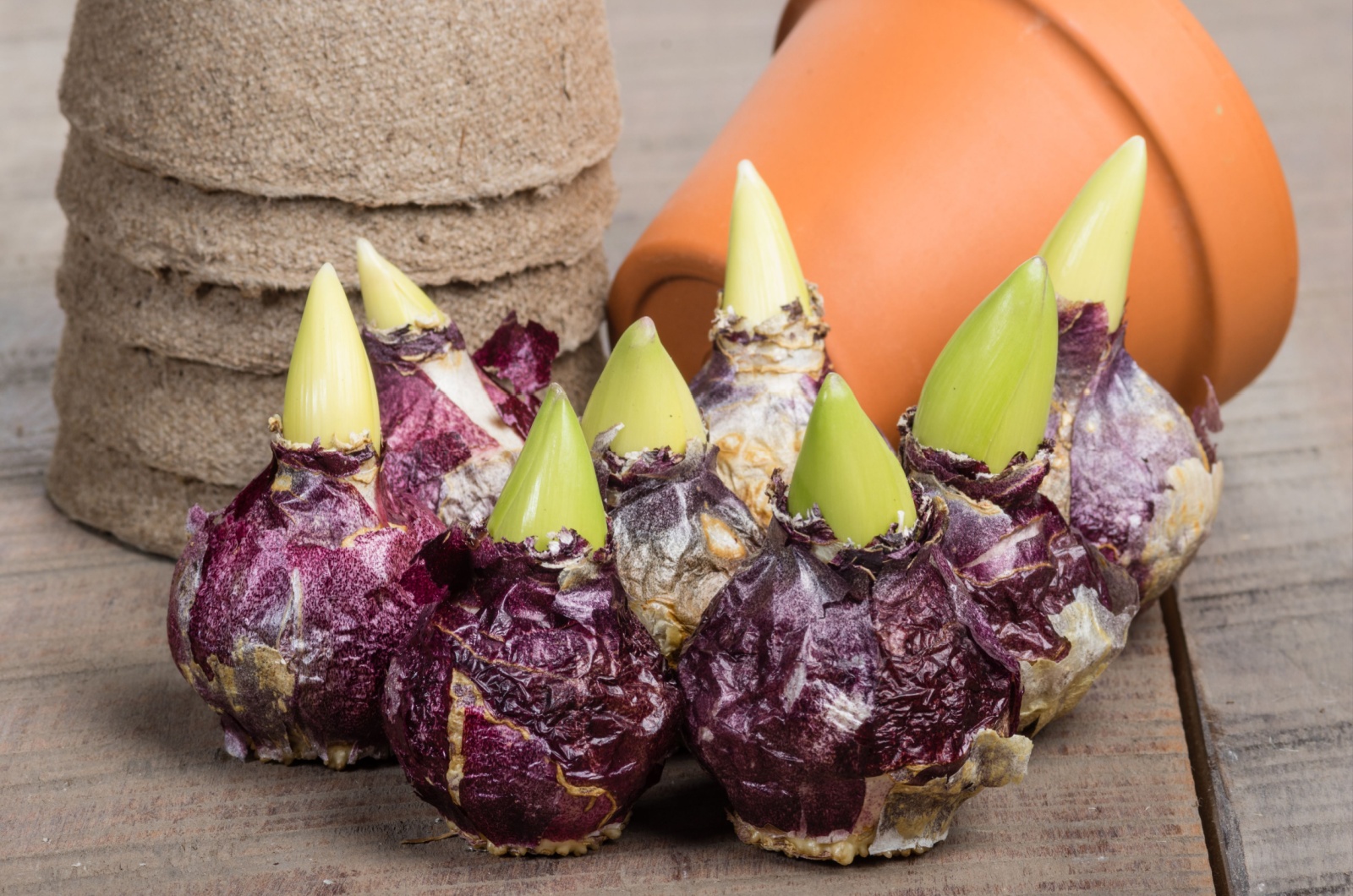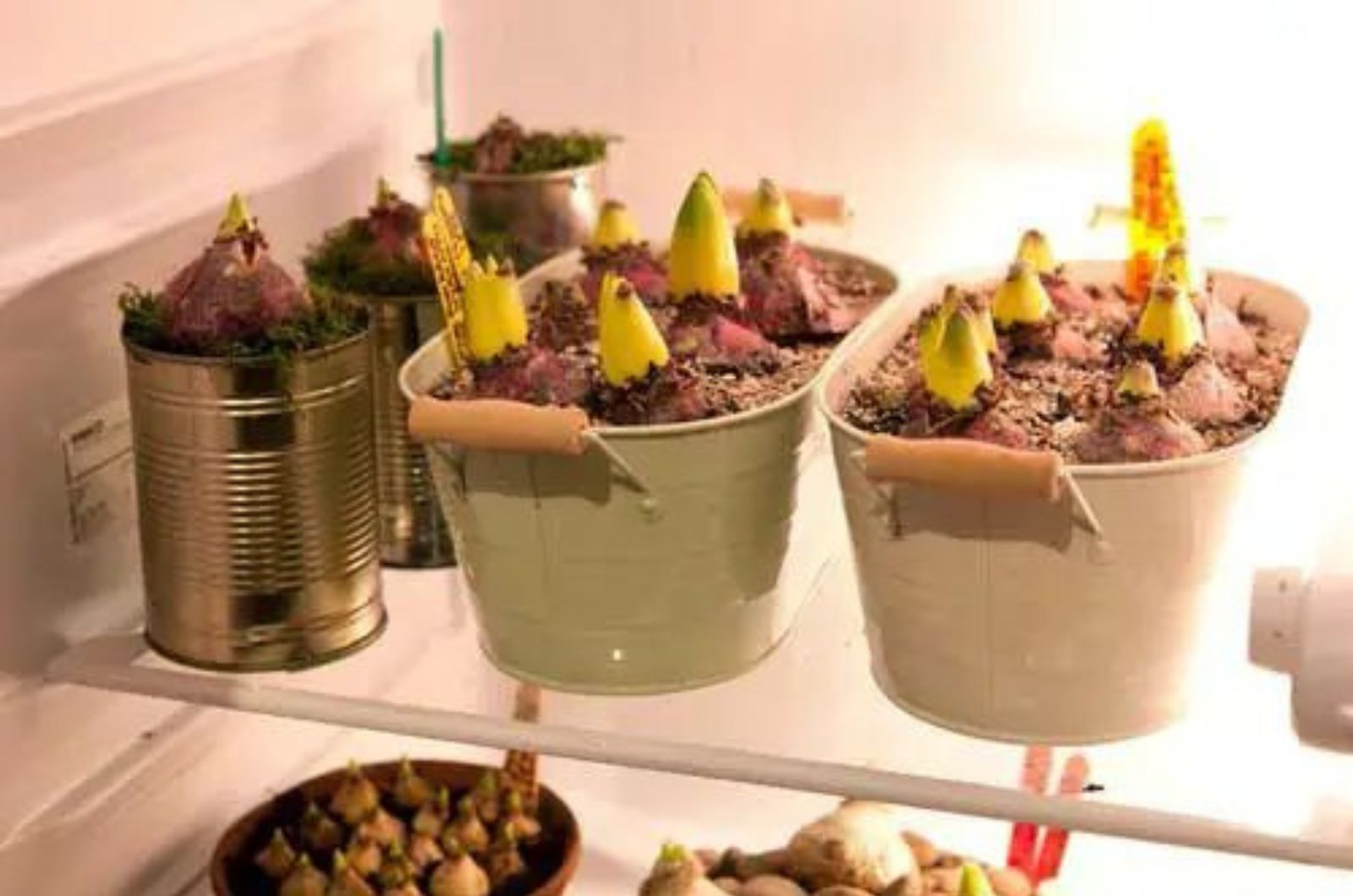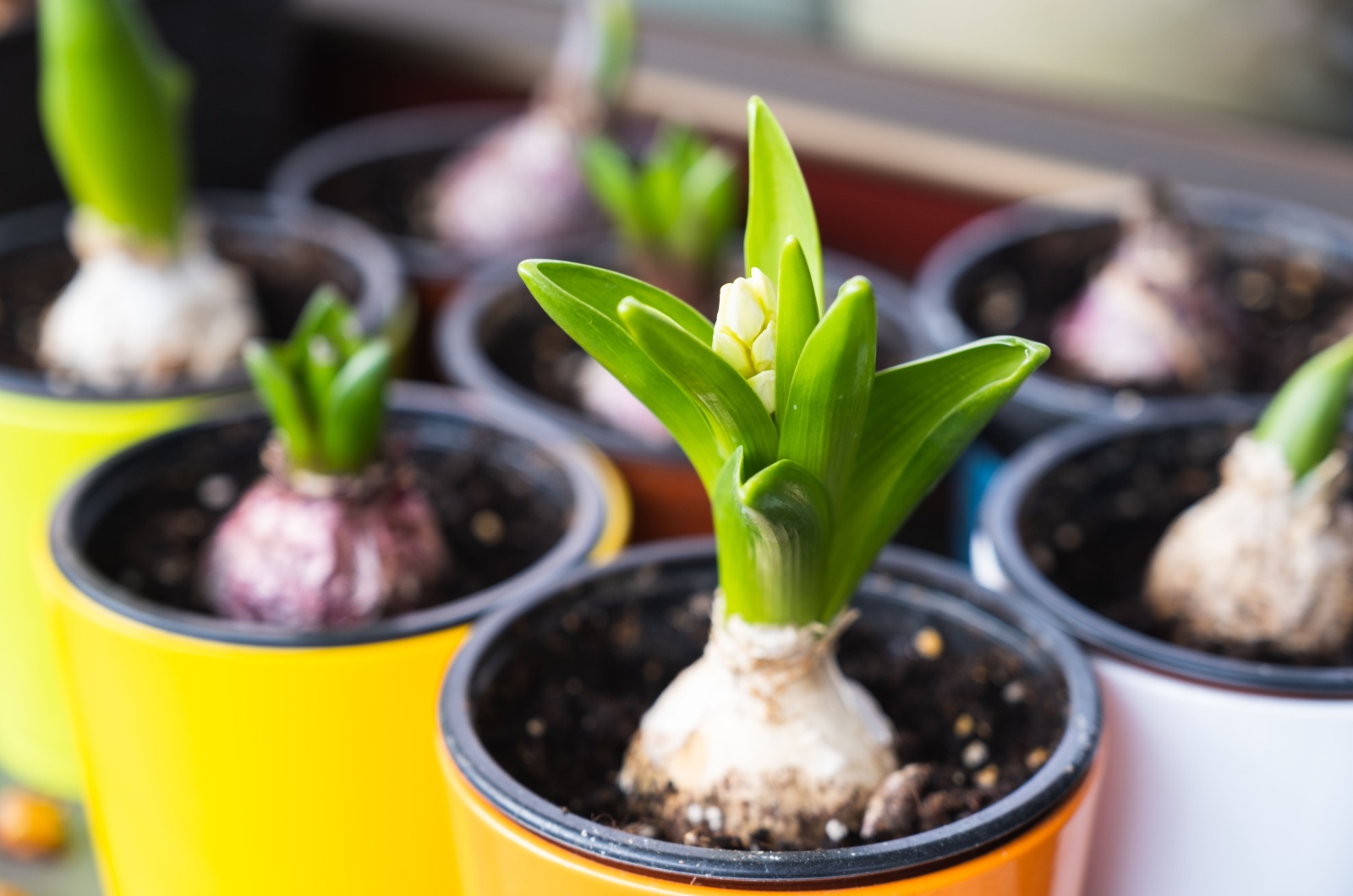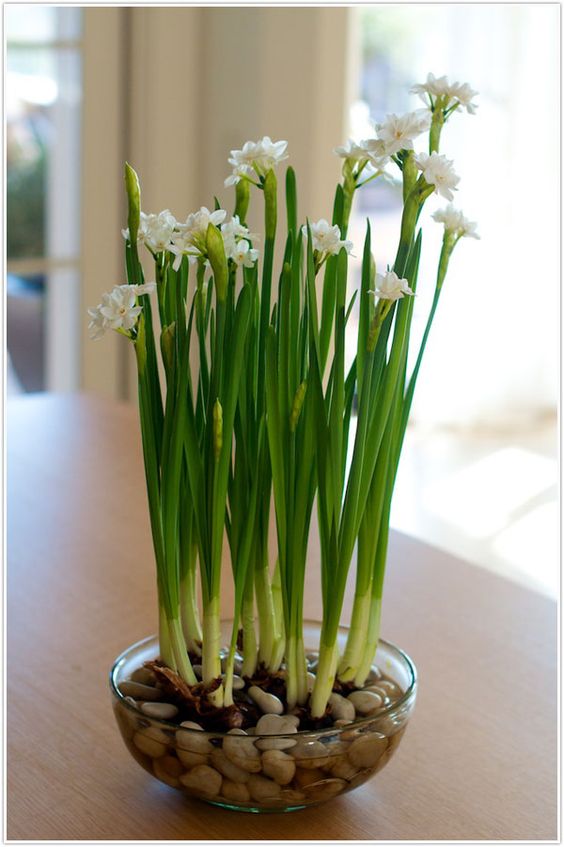As winter comes closer, here’s a neat trick to make your home feel like spring is already here — forcing flower bulbs. This guide will show you an easy way to make beautiful flowers bloom early, bringing color and joy to your winter days.
There are many different bulbs that can bloom in the winter, so you can pick and choose the one that suits your home decor the best.
Let’s see your options and how to trigger bulb blooming!
Bulbs That You Can Force Into Bloom
Flowering bulbs are a popular choice for indoor decorations, especially around the holidays. Opt for delicate paperwhites or vibrant amaryllis to add a dramatic touch to your table arrangements.
Most spring-blooming bulbs can be triggered to bloom a little bit earlier. For instance, daffodils and hyacinths are often forced into blooming during the winter, but you can also try with crocuses, tulips, anemones, and snowdrops.
Related: The Best Time To Plant Amaryllis Bulbs Indoors For Christmas Flowering
The key is timing. You’ll have to start your bulbs in September or November and put them outside as they need some time in the cold to trigger blooming.
Here’s a thorough description of what you need to do:
1. Use An Adequate Container
Find a container deep enough that your bulbs can spread their roots comfortably (the roots are usually 3 to 4 inches long). Make sure that your bulb container has drainage holes in the bottom.
This is crucial because the holes will ensure that the water drains well and prevent overwatering, which is something most bulbs are prone to.
2. Plant Your Bulb Properly
When planting bulbs, make sure to use well-draining, moist soil. Fill the pots with soil and plant your bulbs close to each other, ensuring that their root side is down.
Cover minor bulbs with a thin layer of soil and leave the tip of larger bulbs uncovered.
Bulbs will grow just fine even if you keep them in a soilless medium, like coco coir or rocks.
3. Give Them Some Time To Chill
Now you’ll have to keep your bulbs in a dark and cold place that will mimic winter conditions. The temperatures should be kept below 50 degrees Fahrenheit, but they should never drop below freezing.
You can simply place them in a cold frame or unheated garage. You can even put them in a refrigerator – but make sure that there are no fruits that produce ethylene in there too.
Storing bulbs outside is also a good option as long as you cover them with an insulating layer like straw, dry leaves, or mulch to protect them from frost. If you put them outside, I would suggest you cover the bulbs with a metal screen because squirrels tend to steal your bulbs!
Related: 6 Steps For Planting A Bulb Lawn
4. Keep Them Nice And Warm
After you’ve exposed your bulbs to cold, now is the time to warm them up!
As soon as you see new growth on the bulbs, it’s time for a change. Put them in a warmer place filled with light. The temperature should be kept above 50 degrees Fahrenheit but below 65 degrees.
A basement or garage would be a great place to keep your bulbs, just make sure that they receive enough light, even if it is artificial. Keep them like this for a week and then you can bring your triggered bulbs indoors.
How To Take Care Of Bulbs
It might take a few weeks for them to reach full bloom, so be patient!
Keep giving them spring-like growing conditions with warm temperatures and bright light. Don’t let them sit close to a space heater or radiator because it might impede blooming.
If you’ve used soil, make sure that it is kept moist but not soggy. Overly wet conditions might ruin your bulbs. Larger blooms might need staking to keep them growing upright.
For instance, amaryllis is a type of bulb with upright growth that produces large blooms which often need support.

